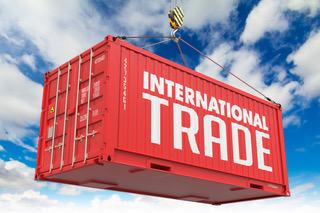1. Invoice Finance
Invoice Finance (also known as Factoring, Invoice Discounting and Receivables Finance) is an arrangement whereby a business can “sell” (called an assignment) an unpaid invoice to a funder in return for an immediate cash advance with the balance being paid (less the funder’s fee) when the customer eventually settles the invoice.
UK origins of modern Invoice Finance began in the 1960’s and fast forward to the 21st Century we have sophisticated providers that combine the traditions of innovation and quality customer service with high-tech real-time 24/7 on-line interfaces for clients, where in some cases funding is released immediately the invoice is accepted on the system. It’s not just a UK business solution either. The latest Global statistics reveal world-wide Invoice Finance volume of 2,917BN Euros of which 68% relates to funding in Europe with the UK’s share being 329BN Euros. This is a funding solution that allows businesses of all sizes to maximise their cash-flow using a proven and established customer focused service.
What types of arrangement are possible?
- Funding just one invoice as a one-off arrangement
- Funding a series of invoices relating to a contract or order from a specific customer
- Funding invoices to different customers or one nominated customer from time to time
- Funding the whole sales ledger all of the time
Things to consider
- The invoice to be financed must be for goods or services already provided/delivered.
- The invoice(s) need to be correctly made out in the name of the customer who ordered the goods or services from you.
- The credit period offered to the customer should “normal terms” for the industry sector – for example 30 days or 60 days – sometimes longer up to 120 days or even much shorter credit periods 7 or 14 days.
- The funder will be interested in the credit rating of your customer(s).
- The invoice should not be overdue or delinquent or in dispute.
- Invoices for domestic UK sales and Exports can be financed.
- Different funders will have varying criteria, depending on the type of arrangement required and the potential client’s circumstances.
- Some funding arrangements could have long contracts eg 12 months whilst others might only have a 30 day minimum period or indeed no minimum period at all.
- The invoice(s) you wish to fund must not already be pledged to another lender.
- Facilities can sometimes include protection against bad debt – usually via a Credit Insurance policy (if you have your own policy that’s fine) if not, the funder will be able to arrange this or often simply include it as part of the arrangement. Again, this will depend on the structure of the facility – for example financing a single invoice for say £100,000 will likely need to be insured whereas invoices with small balances say under £2000 probably won’t.
- Where you have existing funding, for example a bank overdraft, mortgage or loan that may affect your ability to finance invoices to it’s really important to tell us about existing arrangements when we start working together.
Growth Finance team of experts will work with you to match your needs with the most appropriate funder.
2. Transactional “Whole Cycle” Trade Finance
The funding of “cross border” trade by third parties has been around since Egyptian and Roman times and has been used in the UK from the Elizabethan Tudor age until the present day. Arrangements have evolved into what is now available for 21st Century business owners whether it is to fund a large one-off order, a series of orders or just regular ongoing trading – that is buying goods from one country to be sold to a customer in another – although as well as Importing & Exporting the concept can equally be used to buy from a supplier and sell to customer who are both in the UK.
The good news for business owners is that funding can be made available for this type of Trading whether you are just setting up your business and wish to finance that very first transaction or are a long established multi-million turnover organisation seeking obtain extra funding lines to support growth. Trade Finance is also sometimes called Purchase Order Finance or Supply Chain Finance
How does the system work? Well firstly it’s very much about the transaction. So, a potential Trade Finance client needs to have a confirmed Purchase Order from a creditworthy end buyer (the customer). The funder will look at the transaction and once approved will be able to pay the original supplier on the client’s behalf, usually when the goods are ready to be shipped or sometimes on arrival in the UK. If the goods are coming to the UK the arrangement can optionally include the funder paying the Freight, VAT & Duty on the client’s behalf when they arrive. The funder is repaid when the goods are delivered to the end buyer (the customer) and a sales invoice is raised and sold (called assignment) to the funder. When the buyer (the customer) settles the invoice say 30 or 60 days after delivery the funder deducts the advances already made plus their fee and the client gets their profit on the deal. This is a very simple overview as these arrangements can be bespoke in many ways for each client or indeed for each transaction. Remember that whilst it’s a great way to import goods to the UK is also works where both the supplier and the customer are in different countries and the goods never actually enter the UK.
Things to consider:
- The funder will wish to know that your end buyer (customer) has credit rating to match the value of the order they are placing. Sometimes the funder will be able to Credit Insure the customer using their own policy (or the client’s).
- The funder will wish to understand who the originating supplier is, and if the client regularly buys from them and that they can be considered as a reliable source of goods.
- Depending on the goods, who the supplier is and perhaps the value of the transaction it may well be a requirement to have the goods inspected at the Supplier’s Factory – although many importers/overseas traders do this as a matter of course and have established local Quality Control arrangements in place.
- If the Supplier requires a deposit when the order is placed some funders will prefer the client to find this cash from their own resources whilst others may be willing to advance money for deposits. It will depend a great deal on the nature of the transaction, including trading history, the product and perhaps the margin between the buying and selling price.
- Usually, this arrangement is for finished goods (or nearly finished goods that maybe need some final low-cost processing – eg local packing or labelling) that can be delivered easily and quickly to the end buyer (the customer) without long delay. Sometimes it is possible to finance the purchase of major or key components for quick final assembly by the client.
- What is important is that the client needs to have good paperwork skills or find someone who has, to make sure they can support the transaction all the way through from order to final payment.
- Ideally the maximum advance that a funder will make (including if required Freight, Vat and Duty) should not exceed 80% of the end gross sales invoice value – ideally a little less. However, if the margin on a transaction is lower it may be that the funder will contribute the major portion of the buying costs with the client also contributing a smaller amount to make the deal work.
This type of arrangement is an excellent method of providing business owners with almost unlimited funding to support forward orders with the focus being on the transactions not on historic information and balance sheet assessment. Growth Finance full appreciate all aspects of these facilities and can guide you through the process of finding the best way to fund your trading going forward.
3. Revolving Stock Finance
Stock Finance is also sometimes called Inventory Finance or simply Trade Finance.
The principle is that a funder provides a credit line to it’s client to purchase goods, (stock/inventory) which are to be resold at an unspecified future date. The advance made by the funder is repaid on an agreed future date or even on a regular monthly instalment basis. The concept has been around for centuries and until more recently tended only to be available for well-established companies with profitable track records and high balance sheet net worth. More recently as well as these large funding lines new players in the market have been willing to provide this type of arrangement for smaller businesses and at much lower levels of advance – down to say £50k as compared to traditional providers working in the sphere of funding lines of say £250k – £10m.
What to consider:
- Some funders will sometimes use the stock alone as security whilst others may rely on the credit rating of the client or even a mix of the two. For smaller funding lines director’s guarantees or a Debenture may also be sought. It’s very much each application to be considered individually.
- Usually, the funder will seek to have “title” to the stock until it is sold – they are various proven ways this can be achieved.
- In most, but not all cases, the cash advance is not made to the client but is a payment made to a supplier to settle an invoice. The supplier is paid by bank transfer on behalf of the client and usually the supplier is unaware of the arrangement.
- It is not uncommon for a funder to wish to have regular updates on the inventory (stock) levels, maybe monthly or quarterly and there are different methods used to achieve this.
- The stock may be stored at the client’s own premises or a third-party warehouse and is not always kept in the same country as the client. All of these should be explored when setting up a Stock Finance account.
- In the majority of situations, a Stock Finance facility will be complimentary to the client’s existing Banking or other funding lines.
- The stock being financed will be repaid based on the client’s “usual” business cycle although special arrangements can sometimes be agreed to finance seasonal sales or where extended credit terms are being offered to customers.
- A funder will be interested in the quality of the goods, their origin and “shelf life” as part of the initial New Business process
- A potential client will be expected to have good financial reporting systems and not be “distressed”, again all aspects of the client’s business will be taken into account in order to try to structure an arrangement that works for both Client & Funder.
- Some funders have the latest technology with on-line client portals for managing transactions whilst others will have more personalised arrangements with daily/weekly phone and email interaction with clients.
Summary
Stock Finance facilities work well for businesses that have continuous sales but do not always (or indeed ever) have confirmed forward orders. The end sale of the goods does not have to be Business to Business as retailers often like to have an independent Stock Finance line of Credit. It’s a highly flexible arrangement usually for finished goods, although Stock Finance can also work well for components or similar for assembly by the client. Larger lines can be used for commodities, especially for cross border trade. Whether stock is for sale in the UK or for Export this type of arrangement can provide that extra buying power either on a regular basis or simply from time to time.
4. Letters of Credit
Letters of Credit are a long established means of two businesses Trading securely with each other and is still widely used around the world. The latest statistics suggest that global annual trade using LC’s is around 2.3 Trilllion Dollars (US $)
Letters of credit (LC’s) are one of the most versatile and secure instruments available to international traders. An LC is a commitment by a bank on behalf of the importer (usually a foreign buyer) that payment will be made to the beneficiary (“the exporter or the seller”) provided that the terms and conditions stated in the LC have been met, as evidenced by the presentation of specified documents.
Since LC’s are credit instruments, traditionally, the importer’s (the buyer’s) credit arrangements with their bank have been used to obtain an LC. The importer pays the bank a fee to render this service. However, there are now many independent funders who will also provide LC’s for buyers based on the Transaction quality and will seek to recoup their funding by either having a reciprocal LC from the end buyer or assignment of an end receivable (Sales Invoice).
An LC is useful when reliable credit information about a foreign buyer is difficult to obtain or if the foreign buyer’s credit is unacceptable, but the exporter is satisfied with the creditworthiness of the buyer’s bank.
This method also protects the importer/buyer since the documents required to trigger payment provide evidence that goods have been shipped as agreed. However, because LCs have opportunities for discrepancies, which may negate payment to the exporter, documents should be prepared by trained professionals. Growth Finance have experts who can assist with this.
An LC, also sometimes referred to as a documentary credit, is a contractual agreement whereby the issuing bank (the importer’s bank), acting on behalf of their customer, promises to make payment to the beneficiary, the exporter (the seller/supplier) against the receipt of complying stipulated documents. The issuing bank will often use a local intermediary bank located in the seller’s country to facilitate the transaction and make payment to the exporter. Most major banks around the world have International Services departments with experienced staff who handle these transactions on a daily basis.
The LC is a separate contract from the sales contract for the goods on which it is based; therefore, banks are not concerned with the quality of the underlying goods or whether each party has fulfilled the terms of the sales contract.
The bank’s obligation to pay is solely conditioned upon the seller’s compliance with the terms and conditions of the LC. In LC transactions, banks deal in documents only, not goods.
LC’s can be arranged easily for one-time transactions between the exporter and importer or used for an ongoing series of transactions.
Unless the conditions of the LC state otherwise, it is always irrevocable, which means the document may not be changed or cancelled unless the importer, banks involved, and exporter agree.
Confirmed Letters of Credit
A greater degree of protection is afforded to the exporter where an LC issued by a foreign bank (the importer’s issuing bank) has low or weak International Credit rating so the exporter(the seller) asks its customer (the buyer) to have their issuing bank authorize another bank, often in the exporter’s country, (but not always) to “confirm” the LC. This Confirmation means that the confirming bank is now obliged to pay the exporter should the original bank fail to do so. If an LC is not confirmed, the exporter is subject to the payment risk of the foreign bank and the political risk of the importing country. Many major UK and EU banks will agree to confirm LC’s as will US and Asian banks – they will all have excellent ratings and most likely have an ongoing relationship with the buyer’s local country Bank.
Exporters should consider getting confirmed LC’s if they are concerned about the credit standing of the foreign bank or when they are operating in a high-risk market where political upheaval, economic collapse, devaluation, or exchange controls could put the payment at risk. Exporters should also consider getting confirmed LC’s when importers are asking for extended payment terms.
The Letter of Credit Process
There are typically seven steps that occur in order to get paid using a letter of credit:
- The importer (buyer) arranges for it’s bank to open an LC in favour of the exporter(the supplier).
- The buyer’s bank (the issuing bank) transmits the LC to the seller’s (the supplier/exporter) bank, which forwards it to the exporter for approval.
- The exporter forwards the goods and documents to a freight forwarder.
- The freight forwarder arranges shipment of the goods and submits documents to the seller’s bank.
- The seller’s bank checks documents for compliance with the LC terms and collects payment from the issuing bank on behalf of the exporter/seller, their customer.
- The importer’s account at the issuing bank is debited.
- The issuing bank releases documents to the importer to claim the goods from the shipper and to clear them at customs.
Special Letters of Credit
Letters of credit can take many forms. When an LC is made transferable, the payment obligation under the original LC can be transferred to one or more secondary beneficiaries. With a revolving LC, the issuing bank restores the credit to its original amount each time it is drawn down.
A standby LC is not intended to serve as the means of payment for goods but can be drawn in the event of a contractual default, including the failure of an importer to pay invoices when due. In addition, standby LCs are often used as counter guarantees against the provision of down payments and progress payments on the part of foreign buyers.
In summary
Letters of Credit are in use every day all around the world and can be an ideal way to trade with suppliers and or customers overseas. Whether an experienced user of LC’s or have that first LC trading opportunity Growth Finance can help with all types of LC arrangements.












